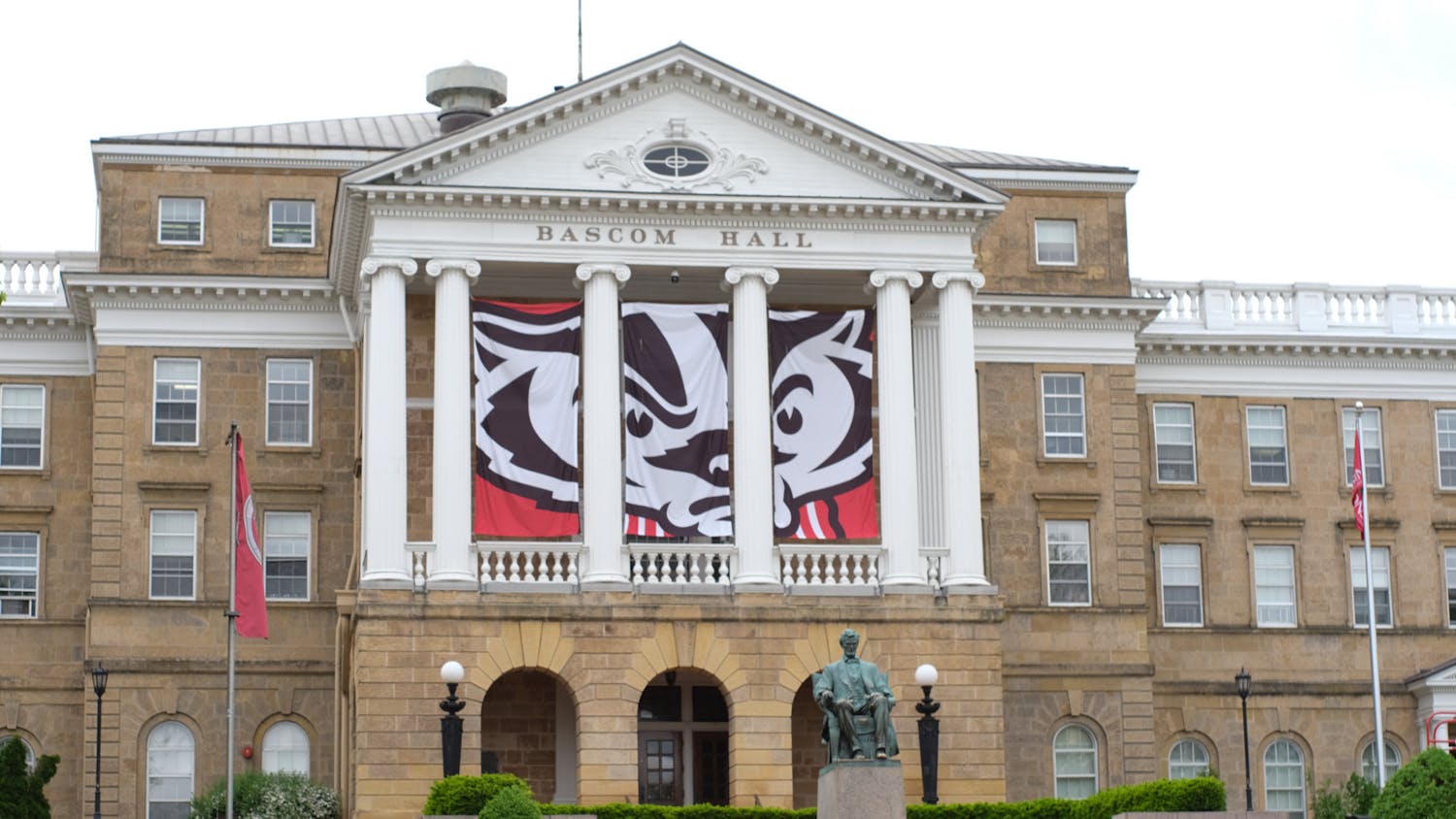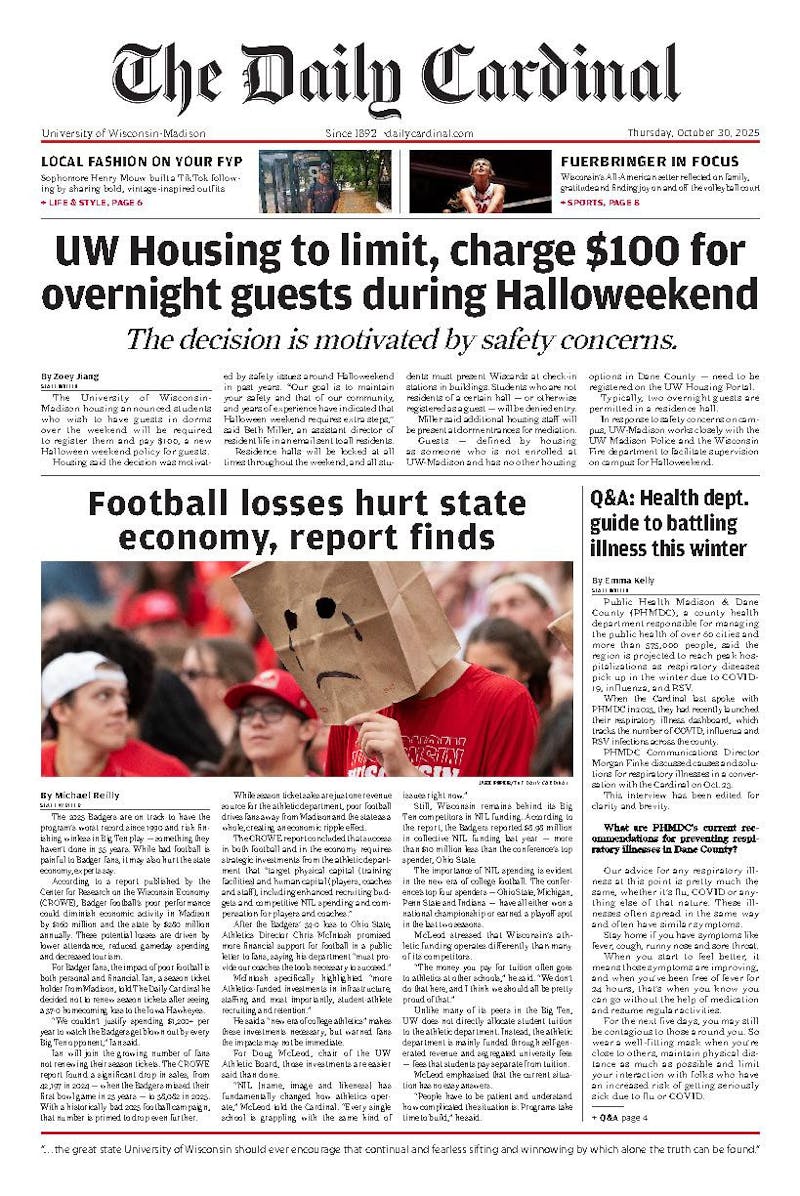For the next 28 years, every UW-Madison student will pay $96 per semester, totaling about $800 to $1,000 per education, for a new Union South and for Memorial Union renovations. Cumulatively, the students' contribution to the Union project amounts to nearly $100 million, not including tens of millions of additional dollars in interest payments on the bonds necessary to finance construction.
Promising ""students would have control over every aspect of the project and ownership of the final results,"" the Wisconsin Union's Student Union Initiative (http://unionvote.wisc.edu) campaigned for student votes endorsing this fee increase in 2005 and 2006. Student control was ensured, at least in part, by a further pledge that a student-majority Design Committee would steer the design process. This collaborative, shared governance committee would consist of both Union and ASM student appointees, as well as faculty members, Union staff and UW-Madison alumni.
In October 2006, students ultimately voted in favor of the Student Union Initiative by an almost two to one margin. The Design Committee members were soon selected from a campus-wide pool of applicants. Between November 2006 and May 2009, these individuals spent hundreds of hours reviewing student surveys, responding to architectural concepts and debating everything from green building goals to the type of exterior material. The mark of Design Committee members and so many other dedicated individuals who participated in the process is unmistakably evident in such critical features as the building's exterior style that embraces natural materials like Wisconsin stone rather than concrete, food service based around individual restaurant concepts rather than a food court, and a mixture of meeting spaces targeted to better accommodate services requested by the campus community.
While the Design Committee format ensured student representation and involvement, it also brought transparency to what is otherwise a largely closed process. Committee meetings were not only open to the public, but the public was also usually invited to share their thoughts and ideas. Design concepts presented at these meetings were also posted online for further review and comment. Unfortunately, all posts to the official project blog, along with associated comments, were recently deleted in an effort to ""clean up the website,"" meaning it is now difficult to find much online information about the project.
Regrettably, the Design Committee has not met since the end of the spring 2009 semester. At that point, design of the building itself was essentially complete, leaving significant decisions only for the furniture, fixtures and equipment. Recognizing the challenge summer poses to organizing a consistent group of students, Union leadership including Union Director Mark Guthier, Union Associate Director Hank Walter and myself put together a plan for an interim summer Design Committee that would preserve the student majority and seek to maintain as much continuity in membership as possible. Regular updates were also to be sent to Design Committee members and other individuals active in the project, and the current Union vice president for project management was to present a report on plans for the Design Committee during the first Union Council meeting of the fall semester—this report has yet to be made. Union Council, the institution's governing board, endorsed this strategy at its May 2009 meeting.
A July e-mail from Union leadership thanked those individuals involved in the summer design furniture process and informed them the project would be taking a new direction based on a smaller group of decision makers. The Wisconsin Union has since rejected multiple private and public requests to remedy the situation by either reinstating the Design Committee or finding an alternative to ensure adequate student representation and oversight.
In defense of their actions, Union officials attempt to cite language in the Student Union Initiative's Design Committee promise, saying the committee ""will continue to meet until construction begins."" Anyone who has recently passed the Union South site could affirm construction is well under way. This argument, however, fails to account for the reality that construction of state building projects does not begin until design is complete, unless a project receives a rarely granted waiver to hire a construction-manager-at-risk. The Union project received such a waiver in 2008, thereby significantly altering the project's course. Construction officially commenced on this project when it received state Building Commission approval in February 2009, at which point the building's interior design was just beginning.
The Union further argues both that student involvement still exists in the form of the Wisconsin Union Directorate (WUD), the institution's student programming board, and that the project is now transitioning to evaluating how the new building will be used. These arguments ignore the fundamental issue—students presently have no accountable representation on a project funded with $100 million of student fees.
In securing the student vote for the $100 million necessary to fund this project, the Student Union Initiative promised to create a Design Committee to steer the design process. The design process is not complete, so where is the Design Committee?
yes""> -Dan Cornelius, Graduate Student, Wisconsin Union VP for Project Management and Design Committee Chair (2008-09)





